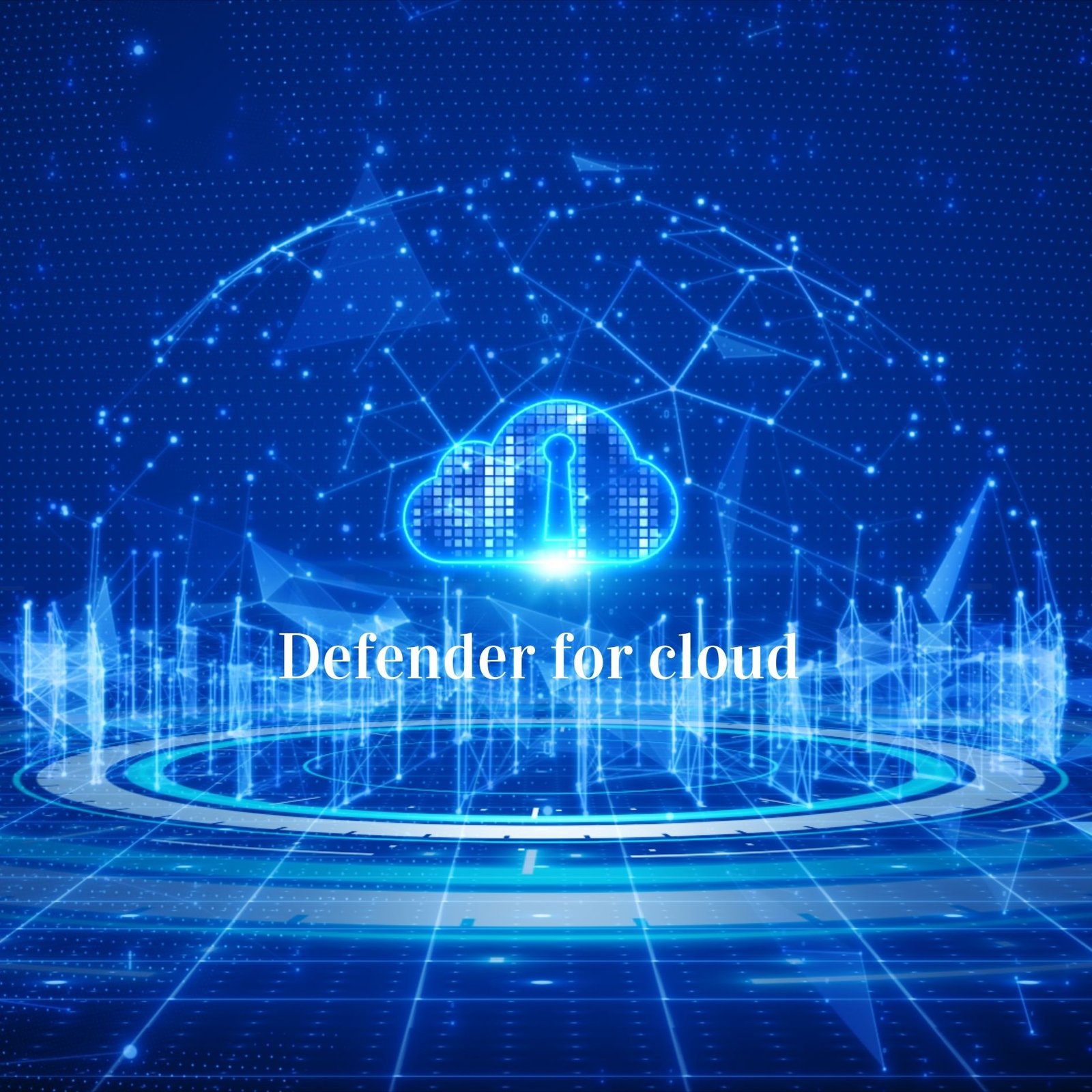Table of Contents
1. Introduction
In today’s digital age, cloud security is more critical than ever. With businesses shifting to cloud-based infrastructure, protecting sensitive data and applications from cyber threats is a top priority. Microsoft Defender for Cloud is a powerful security solution that protects against various cyber risks. However, its true strength lies in its integrations with other security tools and platforms, significantly enhancing its capabilities.
In this article, we’ll explore 11 powerful integrations that can enhance your cloud security. From Azure-native services to third-party solutions like Splunk and AWS Security Hub, these integrations will help you build a secure and resilient cloud environment.
2. What is Microsoft Defender for Cloud?
Microsoft Defender for Cloud is a comprehensive security solution that protects cloud workloads, applications, and data. It offers advanced threat protection, security posture management, and compliance monitoring for multi-cloud and hybrid environments.
Benefits of Defenders for Cloud:
- Threat Protection: Detects and mitigates security threats in real-time.
- Security Posture Management: Helps maintain compliance with industry regulations.
- Multi-Cloud Support: Works with Azure, AWS, and Google Cloud.
- Automated Remediation: Responds to security incidents with AI-driven automation.
By integrating Defenders for Cloud with other security solutions, organizations can further enhance their security framework, ensuring better threat detection and incident response.
3. Why Integrate Defenders for Cloud?
Integrating Defender for Cloud with other security tools allows businesses to:
- Enhance Security Posture: Strengthens defense mechanisms with comprehensive security monitoring.
- Automate Threat Detection & Response: Uses AI-driven insights to detect threats faster.
- Ensure Compliance: Meets industry security standards more effectively.
- Improve Visibility: Provides centralized security monitoring across multiple cloud platforms.
These integrations help businesses avoid evolving cyber threats while ensuring their cloud environments remain secure.
4. Key Features of Defenders for Cloud
Defender for Cloud offers a range of features that improve overall cloud security:
Threat Protection
- Detects and responds to cyber threats in real-time.
- Uses AI and machine learning for anomaly detection.
Security Posture Management
- Continuously assesses security configurations.
- Provides recommendations for security improvements.
Compliance Management
- Monitors compliance with frameworks like ISO 27001, NIST, and GDPR.
- Automates compliance reporting for audits.
These features form the foundation of a strong cloud security strategy. However, businesses can maximize their security capabilities by integrating with other tools.
5. Top 11 Defenders for Cloud Integrations
Now, let’s dive into the most powerful integrations that can enhance your cloud security:
5.1 Azure Security Center
Azure Security Center works seamlessly with Defender for Cloud to provide continuous security assessments, advanced threat protection, and security recommendations for Azure workloads.
5.2 Microsoft Sentinel
Microsoft Sentinel is a cloud-native SIEM (Security Information and Event Management) and XDR (Extended Detection and Response) solution. Integrating it with Defender for Cloud enhances threat detection, investigation, and automated response capabilities.
5.3 Azure Policy
Azure Policy helps organizations enforce security and compliance rules across cloud resources. Integrating with Defender for Cloud automates security compliance and ensures resources adhere to best practices.
5.4 Azure Arc
Azure Arc extends Defender for Cloud’s security capabilities to on-premises and multi-cloud environments, ensuring a unified security posture across all workloads.
5.5 Microsoft Defender for Endpoint
This integration enhances endpoint security by providing deep threat intelligence and automated response to cyber threats targeting user devices.
5.6 Microsoft Defender for Identity
Defender for Identity protects against identity-based threats such as credential theft and lateral movement attacks, making securing cloud user accounts essential.
5.7 Azure Firewall
Azure Firewall provides a cloud-native network security solution, blocking malicious traffic and ensuring secure network segmentation.
5.8 Azure Key Vault
By integrating with Azure Key Vault, Defender for Cloud enhances the security of sensitive information, including encryption keys, passwords, and certificates.
5.9 AWS Security Hub
Integrating AWS Security Hub with Defender for Cloud for multi-cloud environments provides centralized security monitoring across AWS and Azure platforms.
5.10 Google Security Command Center
This integration allows businesses using Google Cloud to extend Defender for Cloud’s security analytics and threat protection capabilities.
5.11 Splunk Integration
Defender for Cloud can send security logs to Splunk for deeper analysis and centralized security event monitoring.
6. How to Implement Defender for Cloud Integrations
Integrating Microsoft Defender for Cloud with other security tools requires a structured approach. Here’s a step-by-step guide to help you implement these integrations effectively:
Step 1: Enable Defender for Cloud
- Log in to the Azure Portal.
- Navigate to Microsoft Defender for Cloud.
- Enable Defender for Cloud for your cloud subscriptions.
Step 2: Choose Your Integrations
- Determine which integrations align with your security needs (e.g., Sentinel for SIEM, Defender for Endpoint for endpoint security).
- Review the compatibility of each integration with your existing cloud environment.
Step 3: Configure Integrations
- For Azure Security Center: Enable continuous security monitoring.
- For Microsoft Sentinel: Connect Defender for Cloud as a data source for SIEM analysis.
- For AWS Security Hub & Google Security Command Center: Use cross-cloud connectors to link cloud environments.
Step 4: Test and Monitor
- Validate each integration by running security tests.
- Configure automated alerts and response actions to ensure rapid threat mitigation.
- Use Azure Monitor and Log Analytics to track integration performance.
By following these steps, businesses can seamlessly integrate Defender for Cloud with other security platforms, ensuring a more robust security posture.
7. Best Practices for Maximizing Defender for Cloud Security
To make the most of your Defender for Cloud integrations, follow these best practices:
1. Enable Real-Time Threat Alerts
- Configure Security Alerts to notify your security team of potential threats.
- Use Microsoft Sentinel to automate threat detection.
2. Automate Compliance Management
- Use Azure Policy to enforce compliance with security standards.
- Regularly audit security configurations to ensure compliance.
3. Utilize AI-Based Threat Detection
- Leverage machine learning insights from Defender for Cloud to detect anomalies.
- Integrate with Microsoft Defender for Identity for identity-based threat protection.
4. Regularly Update Security Policies
- Implement Zero Trust principles for user authentication.
- Update firewall rules and endpoint security configurations.
5. Monitor Multi-Cloud Security
- Connect AWS Security Hub and Google Security Command Center for a unified security overview.
- Use Azure Arc to extend Defender for Cloud’s capabilities to hybrid environments.
By adopting these best practices, organizations can maximize the effectiveness of Defender for Cloud and its integrations.
8. Challenges and Solutions in Cloud Security Integration
While Defender for Cloud integrations provides excellent security enhancements, businesses often face challenges during implementation. Here’s how to overcome them:
Challenge 1: Complexity in Multi-Cloud Environments
- Solution: Use Azure Arc to manage security policies across multiple cloud platforms.
Challenge 2: Alert Fatigue
- Solution: Integrate with Microsoft Sentinel for intelligent, alert prioritization and automation.
Challenge 3: Compliance Requirements
- Solution: Automate compliance tracking with Azure Policy and ensure continuous monitoring.
Challenge 4: Security Misconfigurations
- Solution: Conduct regular security assessments using Azure Security Center and follow recommendations.
By addressing these challenges proactively, businesses can ensure a seamless and effective Defender for Cloud integration.
9. Future Trends in Cloud Security
As cyber threats evolve, cloud security solutions must advance to keep up. Here are some emerging trends shaping the future of cloud security:
1. AI-Driven Threat Detection
- Defender for Cloud will continue to leverage AI and machine learning to identify sophisticated cyber threats.
2. Zero Trust Security Model
- The adoption of Zero Trust principles will increase, ensuring that every access request is verified.
3. Multi-Cloud Security Standardization
- As businesses rely on multiple cloud providers, cross-cloud security frameworks will become more essential.
4. Automated Incident Response
- Integrations with SIEM and XDR solutions will automate responses to security threats, reducing response time.
Staying ahead of these trends will help organizations maintain a strong security posture in the ever-evolving digital landscape.
10. Conclusion
Microsoft Defender for Cloud is a powerful security solution, but its true potential is unlocked through integrations with other security tools. Businesses can enhance their threat detection, compliance, and security posture management by integrating with Microsoft Sentinel, Azure Security Center, AWS Security Hub, Splunk, and other platforms.
Implementing best practices, overcoming integration challenges, and staying updated with emerging trends will help organizations protect their cloud environments from evolving cyber threats.
Investing in these integrations ensures a secure, resilient, and compliant cloud infrastructure, safeguarding your business from modern security risks.









